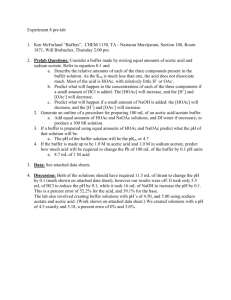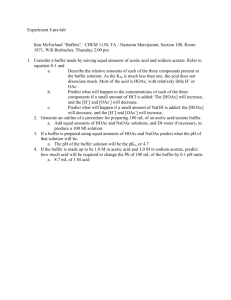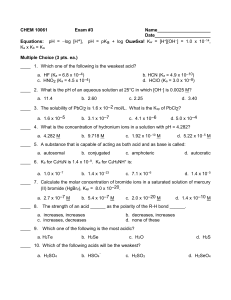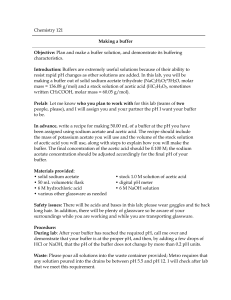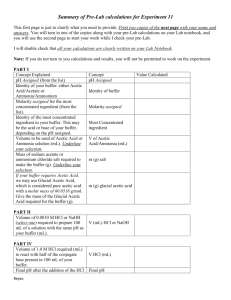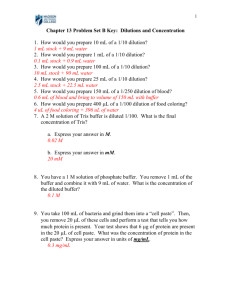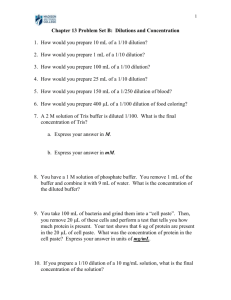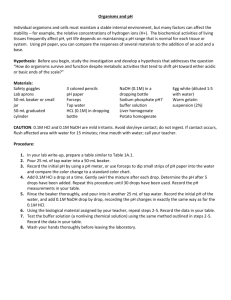Name
advertisement
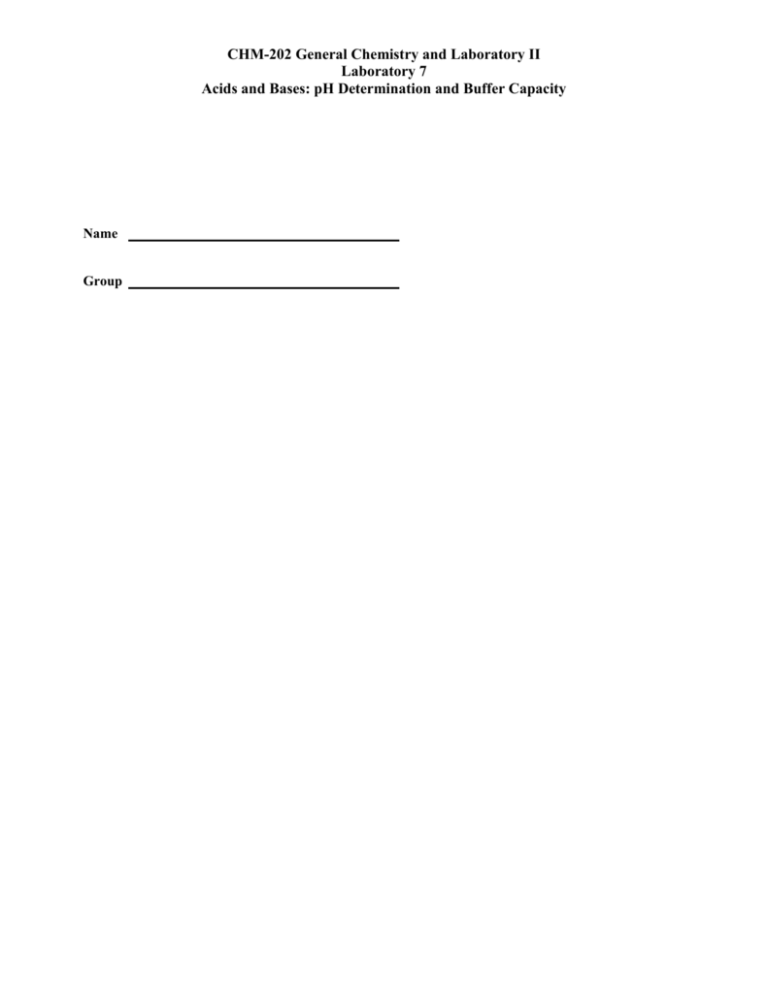
CHM-202 General Chemistry and Laboratory II Laboratory 7 Acids and Bases: pH Determination and Buffer Capacity Name Group Results Dilution of Acids and Bases pH of distilled water is Solution A. HCl Conc. pH Color B. HOAc pH Color C. NaOH pH Color D. NH3 pH Color pH of tap water is 1 10-2 M 2 10-3 M 3 10-4 M 4 10-5 M 5 10-6 M 6 10-7 M Buffer dilution Solution 1 10-2 M 2 10-3 M 3 10-4 M 4 10-5 M 5 10-6 M 6 10-7 M 5x10-2 M 5x10-3 M 5x10-4 M 5x10-5 M 5x10-6 M 5x10-7 M Undiluted 1:10 1:100 1:1,000 1:10,000 1:100,000 Conc. A. Buffer pH Color Conc. B. HOAc/NaOAc pH Color Conc. C. Lemonade pH Color Buffer Capacity 10-2 M Buffer Distilled H2O HOAc/NaOAc Lemonade Initial pH Volume added (Buffer Solution) Final pH Volume of NaOH Added Questions 1. Calculate the number of grams of NaOH per 100 mL to give a pH 8.0 solution if pure water at pH 7.0 is used in the experiment. Repeat this calculation for a pH 6.0 solution using HCl. Comment on how this would or would not explain the fact that distilled and tap water are not exactly at a pH value of 7.000. 2. Compare the pH values in the dilution experiment for each of the acids and bases used to the pH determined for distilled water. Do the pH values for the more dilute solutions approach the pH of the distilled water? What would you predict the pH to be if you diluted the 10-7 M HCl solution by a factor of 10? 3. Compare the pH values in the dilution experiment for the strong acid (HCl) and the weak acid (acetic acid). Do they both have the same pH values at the same concentrations? Do the pH values increase at the same rate across the wells? 4. What is the effect of dilution on the buffer solution? What is the effect of dilution on the acetic acid/sodium acetate solution? On the pH of the lemonade solution? 5. Compare the volumes of base used to change the pH by 1 unit for water, buffer, acetic acid/sodium acetate solution and lemonade (note that you used less lemonade than the other solutions). Do the latter two solutions behave more like the buffer or water?
